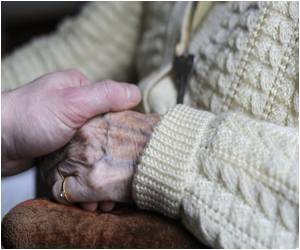
"Such patterns of transitions are burdensome, particularly since the overwhelming majority of family members state the main goal of care is comfort," said study co-author Joan Teno, professor of health policy and practice at the Warren Alpert Medical School of Brown University and a palliative care physician. "These transitions reflect the inefficiency of our health care system. Similar outcomes could be achieved by keeping these patients in the nursing home setting."
An important reason for the prevalence of burdensome transitions might be embedded in the way Medicare pays nursing homes, said Brown health economist and lead author Pedro Gozalo. Nursing homes can earn higher payments for patients who have been transferred to a hospital for three days and they may qualify for skilled nursing services paid by Medicare rather than Medicaid upon their return. The current incentives under Medicare and Medicaid encourage nursing homes to send patients to the hospital, he said.
What makes the transitions burdensome, especially for patients with cognitive impairment, Teno said, is that they are often unnecessary, raise the risk of medical errors, and interrupt continuity of care for patients who can experience significant stress and disorientation when they are suddenly removed from familiar surroundings and people. When the patients become upset, their families experience more stress.
Because these financial incentives, market conditions, and the culture of end-of-life care vary by state, so do the rates of burdensome transitions. The authors, who also include researchers from Harvard University and Dartmouth College, found that the overall percentage of patients experiencing at least one burdensome transition was 19 percent. State-level rates varied from 2.1 percent in Alaska to 37.5 percent in Louisiana.
"These burdensome transitions are not only bad for the patient, they also drain the federal treasury, hastening the day when the Medicare trust fund runs out of money," said economist Jonathan Skinner from Dartmouth College, a co-author on the study.
Advertisement
Blacks and Hispanics were also more likely than whites to experience burdensome transitions, the authors found.
Advertisement
To reach these conclusions, the team analyzed federal databases of nursing home and Medicare records accumulated between 2000 and 2007. In all, they found 474,829 patients who were older than 66, had advanced cognitive impairment, and lived in a nursing home 120 days before their death. Of these, 90,228 residents experienced at least one burdensome transition, defined as either a transfer in the last three days of life, returning to a different nursing home than the one they lived in before they went to the hospital, or multiple hospitalizations in the last 90 days of life.
Often these hospitalizations occur even though the condition prompting the hospitalization — pneumonia, urinary tract infection, or dehydration — could easily be treated in a properly equipped and staffed nursing home.
These variations were particularly wide across different geographic areas. In McAllen, Texas, 25.8 percent of patients had multiple hospitalizations for urinary tract infections, pneumonia or dehydration, compared to only 1.1 percent of patients in Grand Junction, Colo.
The regional rate of burdensome transitions also correlates with other indicators of poor end-of-life care, Gozalo noted. Compared to patients living in the health care markets with the lowest rates of burdensome transitions, those who lived in the regions with the highest rates were three times more likely to have a feeding tube inserted, more than twice as likely to be in the intensive care unit in the last 30 days of life, and more than twice as likely to have developed an advanced pressure ulcer.
Ultimately, Teno said, all of these problems are signs of care gone awry. The best care for a patient with advanced cognitive impairment near the end of life is often to maximize comfort. The burdens of hospitalization usually outweigh the benefits.
"Our research calls for efforts to reform health care payment that create incentives to improve advance care planning and care coordination," Gozalo said. "Current reform efforts like accountable care organizations that bundle both the hospital and post-acute care payments could begin to address some of these perverse incentives. We need financial incentives to make sure that people are getting the right care in the right place at the right time."
Source-Eurekalert













